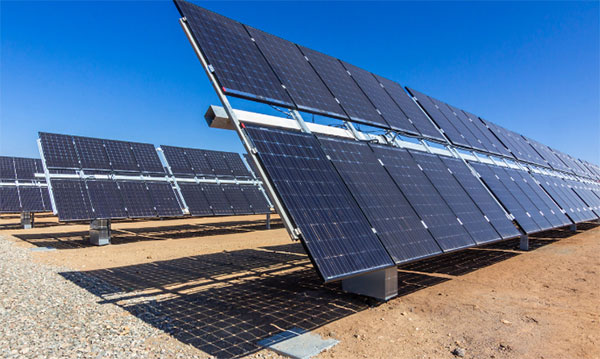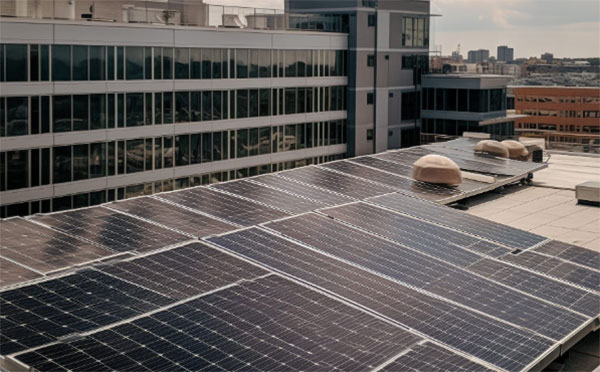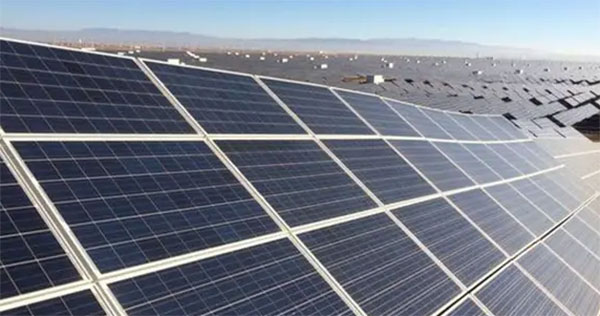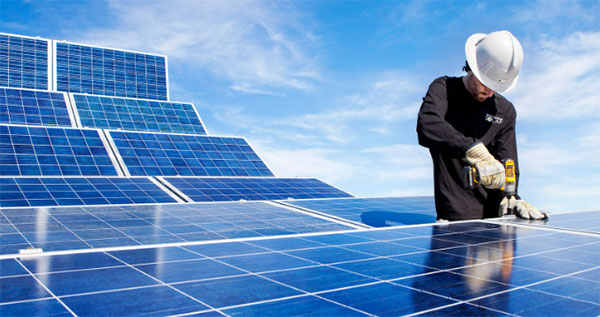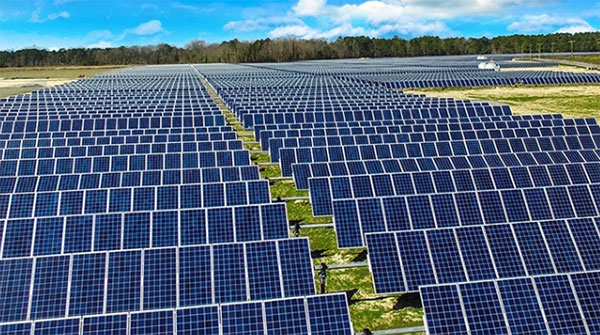Description
The newest solar panel can generate up to 400 watts per panel under optimal conditions.Recent Advances in Solar Panel Technology
Recent advances in solar panel technology have resulted in panels that are more efficient, more cost effective, and more versatile than ever before. Manufacturers are focusing on not only boosting the amount of energy that the panels can produce but also trying to do so as cheaply as possible through greater efficiency and lower costs.
Materials – The newest solar panels use advances such as monocrystalline silicon and perovskite to improve both efficiency and durability. With these new advances, modern panels can absorb more of the solar spectrum and are able to convert it into usable energy more efficiently.
Size and weight – They’re also slimmer and smaller, with a standard that measures around 1.6 x 1.0 meters and weighs approximately 19 kilograms, allowing for easy installation and making new applications possible.
Power Output – The newest panels are also quite a bit more powerful and the average solar panel could now have a capacity of around 400 watts, a huge leap in just a few years.
Efficiency Rate – Efficiency is a key statistic when it comes to solar, and the newer technologies can convert nearly 22 percent of sunlight into electricity.
Efficiency Improvements
Cost Savings – Even as these efficiencies have improved, the cost of solar has gone through the floor. The “soft” cost of solar has now dropped to just 20 cents per watt for the panels themselves, for example. This greater efficiency has made solar a practical option for many more individuals, and a number of power companies are also taking advantage of new technologies.
Lifespan – With many manufacturers now guaranteeing their equipment for 25 or even 30 years, gone are the days where panels simply wore out after just a few short years. These long life spans might now insure that the units will continue producing energy for decades.
Good in Bad Light – The newest panels are also capable of incredibly high output even in less than stress field conditions. Due to these new improvements modern solar panels can operate with incredibly high efficiency even on cloudy days, or in areas that have historically not been suitable for solar technology.
Advantages over Old Technologies – As a result, they produce more energy (for the same amount of sunlight), much more efficiently and at a fraction of the former cost. This makes solar power an attractive investment for anybody with a suitable roof, parking area or unused piece of ground.
Energy Generation Capabilities
The energy generation capabilities of the newest solar panels have seen significant advancements, making solar energy a more feasible and reliable source of renewable energy. Understanding the conditions under which solar panels operate optimally and how they compare in terms of average energy output is crucial for evaluating their efficiency and effectiveness.Peak Performance Conditions
Optimal Sunlight Exposure: Solar panels generate the most energy when they are directly facing the sun at midday. This is when the sunlight is most direct and intense. Ideal Temperature: Contrary to popular belief, solar panels operate more efficiently at cooler temperatures. Peak performance is often observed at temperatures around 25°C (77°F). Efficiency decreases as temperature increases beyond this point. Angle and Orientation: The optimal angle for solar panels varies depending on the geographical location. Panels should be installed facing south in the northern hemisphere, and north in the southern hemisphere, tilted at an angle equal to the latitude of their location for maximum sunlight absorption. Minimal Shading: To achieve peak performance, solar panels should be placed where they can receive uninterrupted sunlight, away from any obstructions that might cast shadows, such as trees or buildings.Average Energy Output Comparisons
Daily and Seasonal Variations: The average energy output of solar panels varies, with higher production in the summer months due to longer daylight hours and more direct sunlight. On average, a 400-watt panel can produce between 1.6 to 2.4 kilowatt-hours (kWh) per day, depending on the location and season. Geographic Impact on Output: Solar panels in regions closer to the equator, where sunlight is more consistent year-round, have higher average energy outputs than those in more temperate or polar regions. Comparative Efficiency with Previous Generations: The newest solar panels offer an improvement of approximately 5-10% in efficiency over previous generations. This translates to a higher kWh output per panel, making them a more cost-effective solution over time. Cost-Effectiveness: With the decreased cost of solar technology and the increased efficiency of new panels, the cost per kWh of solar-generated electricity has become competitive with traditional energy sources. The initial investment in solar panels can be recouped over time through reduced utility bills and potential incentives from renewable energy programs.Factors Influencing Energy Generation
In order to optimize energy generation, it is essential to comprehend several key factors that govern the efficiency and efficacy of solar panels in generating power. Among these, geographic location and sunlight exposure, as well as the angle of installation and orientation of the solar panels, are the most critical.
Latitude and Sunlight Exposure
Latitude: Areas closer to the equator typically receive more direct sunlight year-round and have a greater potential for energy generation by solar panels. For instance, the output from a solar panel in Nairobi, Kenya, would likely exceed the output from a solar panel in Oslo, Norway due to the difference in sunlight exposure.
Sunlight Hours: The length of the day directly impacts energy production. Areas with longer daylight hours, such as the American southwest, have more hours to gather solar energy.
Climate: Locations with clear skies have a higher capacity for generating solar power than those that may be overcast for much of the year. Solar panels installed in desert environments often produce more energy than those in temperate or cloudy regions.
Key Takeaways:
- Greater sunlight exposure in certain areas makes solar panels more effective in these regions.
- Geographic and climatic factors have a notable impact on the generation of solar energy.
Installation Angle and Orientation
Optimal Angle: The angle at which solar panels are installed has a direct impact on their ability to capture sunlight. This angle is generally close to the latitude of the location where the panels are installed. In Sydney, Australia (at approximately 34°S latitude), for example, a solar panel performs best when it is tilted at an angle that is in the neighborhood of 34 degrees from horizontal.
Orientation: In the northern hemisphere, solar panels should ideally face true south and in the southern hemisphere, true north, in order to get sunlight exposure for the majority of each day.
Seasonal Adjustments: In some cases, adjusting the tilt of the solar panels seasonally optimizes their sunlight collection. They can be tilted more steeply in the winter and less so in the summer in order to mirror the path of the sun through the sky.
Key Considerations:
- Proper installation angle and orientation are critical to the efficiency of a solar panel.
- Seasonal modification of the panel angle can further optimize the panel's energy generation.
Advantages of Optimization:
- Maximizing the energy generation capability of solar panels typically reduces the overall cost per kWh of solar energy.
- By optimizing a solar panel’s installation for the specific siting, the project’s return on investment can be accelerated.
Performance in Different Weather Conditions
Solar panels are designed to convert sunlight into electricity, but their performance can be influenced by various weather conditions. Understanding the impact of these conditions, such as cloud cover, rain, and extreme weather, is essential for evaluating the reliability and efficiency of solar energy systems.Impact of Cloud Cover and Rain
- Reduction in Power Output: Cloud cover can significantly reduce the amount of sunlight reaching the solar panels, leading to decreased power output. On heavily overcast days, solar panels might produce only 10% to 25% of their maximum output.
- Light Rain Benefits: Light rain can actually benefit solar panel performance by washing away dust and dirt, which can increase absorption of sunlight.
- Efficiency During Cloudy Conditions: Modern solar panels are designed to be more efficient, even in low-light conditions. While efficiency drops during cloudy weather, they can still generate electricity, albeit at a reduced rate.
- Solar panel performance is impacted by cloud cover and rain, with a noticeable reduction in power output during overcast conditions.
- Periodic light rain can clean panels, slightly mitigating efficiency losses due to accumulated dirt.
Durability in Extreme Weather Conditions
- Resistance to High Winds: Solar panels are rated to withstand high wind speeds, typically up to 140 miles per hour. This makes them capable of enduring most severe weather events without damage.
- Hail Impact: Most solar panels are designed to resist hail up to 1 inch in diameter, traveling at 50 miles per hour. Despite this, severe hailstorms with larger hailstones can cause damage.
- Extreme Temperatures: Solar panels can operate in a wide range of temperatures, from -40°F to 185°F. However, their efficiency can decrease in extremely high temperatures.
- Installation quality and the use of protective measures, like reinforced frames, can enhance the durability of solar panels against extreme weather.
- Choosing panels with a high durability rating is essential for installations in regions prone to severe weather conditions.
- Increased reliability and lifespan of the solar energy system.
- Lower maintenance costs and reduced risk of damage from weather-related events.
Comparative Analysis with Previous Solar Panel Generations
The evolution of solar panel technology has brought significant improvements in efficiency and output, along with a more favorable cost-benefit ratio. This section provides a comparative analysis between the newest generation of solar panels and their predecessors, highlighting key advancements.Efficiency and Output Improvements
| Feature | Previous Generations | Newest Generation | Improvement |
|---|---|---|---|
| Efficiency | 15-18% | 22-25% | Up to 7% increase in efficiency |
| Power Output (Watts) | 250-300W per panel | 350-400W per panel | Up to 100W increase per panel |
| Lifespan (Years) | 20-25 years | 25-30 years | 5 years longer lifespan |
| Temperature Coefficient | -0.5% per °C | -0.3% per °C | Improved performance in high temperatures |
| Material Used | Predominantly polycrystalline silicon | Monocrystalline silicon, Perovskite | Higher quality materials for better efficiency |
- The newest generation of solar panels showcases significant efficiency improvements, allowing for higher energy output.
- Advances in materials and technology extend the lifespan and enhance performance under various conditions.
Cost-Benefit Analysis
| Aspect | Previous Generations | Newest Generation | Benefit |
|---|---|---|---|
| Cost per Watt | $0.50 - $0.70 | $0.20 - $0.40 | Lower initial investment required |
| Installation Costs | Higher due to more panels needed | Lower due to fewer, more efficient panels | Reduced overall installation costs |
| Maintenance Costs | Higher due to shorter lifespan | Lower due to longer lifespan and durability | Decreased long-term maintenance costs |
| Energy Bill Savings | Lower due to less efficient panels | Higher due to increased efficiency | Greater savings over the lifespan of the panels |


